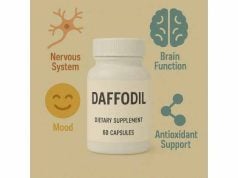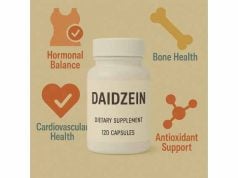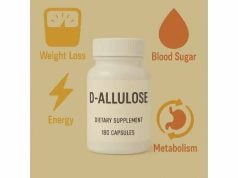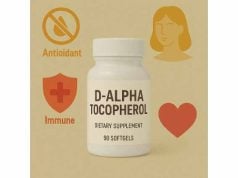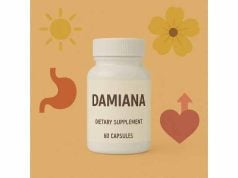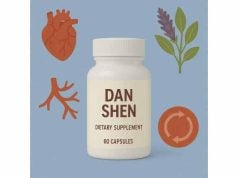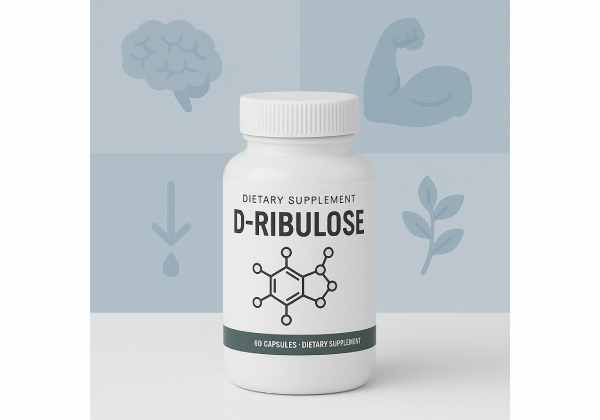
D-ribulose is a little-known simple sugar that your body can make in tiny amounts as part of normal metabolism. Unlike familiar sugars such as glucose or fructose, D-ribulose is a “ketopentose”: a five-carbon carbohydrate with a ketone group. Inside cells, it is phosphorylated to ribulose-5-phosphate and shuttled into the pentose phosphate pathway—one of the body’s core routes for generating antioxidant power (NADPH) and building blocks for DNA and RNA. Because of this link to cellular energy and redox balance, some readers wonder whether supplementing D-ribulose could boost performance or recovery. The short answer: there is no clinical evidence for D-ribulose supplementation in humans, and no standard dose. This guide explains what D-ribulose is, how it fits into metabolism, how it differs from D-ribose, potential risks, who should avoid it, and what the current research actually says—so you can make safe, informed decisions.
Essential Insights for D-ribulose Users
- Intermediate in the pentose phosphate pathway that helps produce NADPH and nucleotide precursors.
- No proven human benefits from D-ribulose supplementation to date.
- No established dosage; consumer self-supplementation is not recommended (0 mg/day outside clinical research).
- Avoid if pregnant or breastfeeding, under 18, diabetic or on glucose-lowering drugs, or if you have inborn errors of pentose metabolism.
Table of Contents
- What is D-ribulose and how it works
- Does D-ribulose have proven benefits?
- How much D-ribulose per day?
- D-ribulose vs D-ribose: key differences
- Is D-ribulose safe and who should avoid?
- What does the research say right now?
What is D-ribulose and how it works
D-ribulose is a monosaccharide with five carbons (a pentose) and a ketone group, placing it in the ketopentose family. In plain terms, it’s a small sugar molecule that is structurally different from better-known sugars like glucose (a hexose) or D-ribose (an aldopentose). In human biology, free D-ribulose is not a common dietary sugar nor a typical circulating nutrient. Instead, it appears within cells as a fleeting intermediate that can be phosphorylated to ribulose-5-phosphate, a hub compound of the pentose phosphate pathway (PPP). The PPP runs parallel to upper glycolysis and serves two vital jobs: (1) generating NADPH, the cell’s primary reductant that powers antioxidant defenses and anabolic reactions; and (2) supplying ribose-5-phosphate to build nucleotides for DNA and RNA synthesis.
How does D-ribulose get “wired in”? Eukaryotic cells—including human cells—express a carbohydrate kinase (encoded by the FGGY gene) that phosphorylates D-ribulose to D-ribulose-5-phosphate. That phosphorylation is the ticket into central carbon metabolism: once D-ribulose becomes the 5-phosphate, it can be isomerized and epimerized to other pentose-phosphates (e.g., ribose-5-phosphate, xylulose-5-phosphate) and then cycled into glycolytic intermediates or diverted to nucleotide synthesis. This flexibility is one reason the PPP is so central in redox control, immune responses, and biosynthesis.
Two clarifications help avoid confusion:
- D-ribulose vs ribulose-1,5-bisphosphate (RuBP): RuBP is a plant compound at the start of photosynthesis—not something humans use. Readers may encounter the name “ribulose” in plant biology; that is a different phosphorylation state and context.
- Dietary exposure: D-ribulose is not a common food ingredient. When it appears in commerce, it is usually as a research chemical, not a dietary supplement.
Put simply, D-ribulose matters inside cells as a metabolic intermediate—not as a nutrient you need to consume. Its importance comes from what it becomes (ribulose-5-phosphate and other PPP intermediates), not from any direct dietary role.
Does D-ribulose have proven benefits?
At this time there are no human clinical trials demonstrating that D-ribulose supplementation improves performance, recovery, cardiometabolic health, cognition, or any other clinical outcome. That absence of evidence is important. You may have seen promising narratives based on mechanisms—because D-ribulose feeds into the pentose phosphate pathway, which in turn supports antioxidant capacity (NADPH) and nucleotide synthesis, could more D-ribulose mean better cellular resilience? Mechanistic plausibility alone is not a benefit. To move from an appealing mechanism to a real-world result, we would need controlled trials that show measurable improvements in validated outcomes, with dose–response data, safety monitoring, and replication.
What about indirect lines of support? A few points come up frequently:
- Metabolic compatibility: Human cells can phosphorylate D-ribulose via a ribulokinase-like enzyme (FGGY). That tells us the body can handle D-ribulose at least at the cellular level, but it doesn’t tell us that adding extra from outside provides a net gain.
- Pathway relevance: The PPP is deeply important in redox balance and biosynthesis; it’s up- or down-regulated in many physiological states (e.g., oxidative stress, immune activation, rapid proliferation). Yet modulating a pathway’s flux safely with a single sugar input is nontrivial and context-dependent. Cells can rewire carbon flow based on need; pushing on one substrate does not guarantee a beneficial global change.
- Lessons from other rare sugars: A handful of “rare sugars” (e.g., allulose, tagatose) have some human data for glycemic effects. But those data cannot be generalized to D-ribulose. Rare sugars differ in absorption, transporters, hepatic handling, and microbiome interactions.
Bottom line: until clinical trials test D-ribulose itself, we should treat any benefit claims as unproven. If your goal is better training recovery, glycemic control, or antioxidant support, consider evidence-based strategies: diet quality, adequate sleep, progressive training, and—where appropriate—nutrients with established human data (e.g., creatine for muscular power, or certain fiber types for postprandial glucose). Those options offer clearer risk–benefit profiles than an untested rare sugar.
How much D-ribulose per day?
There is no established human dose of D-ribulose. There are no dosing guidelines, no consensus expert statements, and no regulatory monographs for D-ribulose as a supplement ingredient. In practice, D-ribulose appears in lab catalogs labeled for research use. Without pharmacokinetic and safety data in humans, self-supplementation is not advisable.
Why dosing is undefined:
- Lack of clinical endpoints: We don’t have trials that tie a specific D-ribulose dose to a desirable, measurable outcome (e.g., faster ATP resynthesis, lower oxidative stress markers, improved time-to-exhaustion).
- Unknown glycemic effects: Pentoses can influence glucose handling in different ways (some benign, some not). Without controlled studies on D-ribulose, we do not know whether it would lower, raise, or variably perturb blood glucose in free-living humans—or whether effects differ across populations.
- Metabolic bottlenecks: Even if cells can phosphorylate D-ribulose via FGGY, whole-body responses depend on transporters, first-pass metabolism, hepatic uptake, renal excretion, and microbiome metabolism. None of this has been mapped for D-ribulose in humans.
If you encounter dosage suggestions online, be skeptical. These are often extrapolated from D-ribose (a different sugar with its own evidence base) or simply mirror “one scoop” marketing conventions. That is not a substitute for data.
Practical guidance:
- General public: The evidence-based dose for consumer use is 0 mg/day—in other words, avoid self-experimentation outside a formal clinical study.
- Clinician-researchers: If D-ribulose is being investigated under an approved protocol, dosing, titration, and stopping rules should follow that protocol’s pharmacovigilance plan, with careful monitoring of glucose, insulin, uric acid, renal function, and gastrointestinal tolerance.
- Product quality: If you see D-ribulose in a retail product, ask for a full ingredient specification, third-party testing, and regulatory status documentation. Absence of a recognized standard of identity or monograph is a safety signal, not a reassurance.
When in doubt, step back. A “dose” only becomes meaningful after we can connect it to benefits and a tolerable safety profile in the intended users. D-ribulose is nowhere near that bar yet.
D-ribulose vs D-ribose: key differences
These two five-carbon sugars are often conflated, but they differ in structure, metabolism, evidence, availability, and regulatory footing.
1) Structure and initial handling
- D-ribose is an aldopentose (an aldehyde-bearing pentose).
- D-ribulose is a ketopentose (a ketone-bearing pentose).
That single functional-group difference changes which enzymes see them first. Humans express ribokinase for D-ribose and a ribulokinase-like enzyme (FGGY) for D-ribulose. Both can funnel into the pentose phosphate pathway but through different entry points and with different kinetic constraints.
2) Evidence base
- D-ribose has human studies examining ATP resynthesis, exercise recovery, and certain cardiometabolic contexts. The data are mixed but at least exist, and food-use notices have been reviewed by regulators.
- D-ribulose has no human supplementation trials demonstrating clinical benefits. It is studied mainly as a metabolite and research substrate.
3) Market presence and regulatory context
- D-ribose is widely marketed as a dietary ingredient, and its use in foods has been reviewed via the GRAS notice pathway in the U.S.
- D-ribulose is not commonly marketed as a supplement ingredient. You will mostly find it as a research chemical sold to laboratories.
4) Interchangeability
They are not interchangeable. Choosing D-ribulose because you’ve read about D-ribose is like substituting the wrong key—similar shape, different fit. Mechanisms, absorption, and whole-body effects can diverge. If a protocol, paper, or product label says D-ribose, do not assume D-ribulose will behave the same way.
5) Practical implication
If your goal is supported by D-ribose research (for example, specific exercise recovery protocols), evaluate D-ribose on its own merits with guidance from a clinician or sports dietitian. For D-ribulose, the prudent stance is to wait for data.
Is D-ribulose safe and who should avoid?
We do not have published human safety data for D-ribulose ingestion at dietary-supplement doses. That means any claim of “safe” or “natural” is speculative. What we can say—cautiously—based on biochemistry and analogies to other pentoses:
- Glycemic effects are unknown. Some pentoses can alter postprandial glucose or insulin dynamics. Without targeted D-ribulose studies, people with diabetes, hypoglycemia, or on glucose-lowering medications should avoid it.
- Gastrointestinal tolerance is uncertain. Many rare sugars cause GI symptoms (bloating, cramps, loose stools) at modest doses; D-ribulose could do the same or worse. Without dose-finding trials, thresholds are unknown.
- Metabolic by-products and interactions: Once phosphorylated, D-ribulose feeds into the PPP, affecting NADPH production and pentose pools. In conditions with disturbed pentose metabolism or redox balance (e.g., certain inborn errors, active inflammatory states), exogenous D-ribulose could, in theory, be unhelpful or destabilizing.
- Quality and contamination risks: Because D-ribulose is primarily a lab reagent, consumer-facing batches may lack food-grade specifications, allergen controls, or contaminant testing. That raises real-world risk independent of the molecule itself.
Who should avoid D-ribulose:
- Pregnant or breastfeeding individuals. No safety data.
- Children and adolescents. No safety data.
- People with diabetes, reactive hypoglycemia, or on insulin/insulin secretagogues. Unknown glycemic effects and interaction risk.
- People with known disorders of pentose metabolism or unexplained episodes of hypoglycemia. Mechanistic caution.
- Anyone scheduled for metabolic testing (e.g., oral glucose tolerance, advanced lipid panels). Uncharacterized interference is possible.
If exposure occurs (e.g., in a study), reasonable monitoring would include fasting and postprandial glucose, insulin, uric acid, renal function, GI symptoms diaries, and any signs of dizziness or unusual fatigue. Stop immediately if adverse effects arise and inform a clinician.
The safest course for the public is straightforward: do not use D-ribulose as a self-selected supplement until clinical trials establish both benefits and safety.
What does the research say right now?
The most relevant findings about D-ribulose come from biochemistry and enzymology, not from human supplementation trials.
1) Cells can phosphorylate D-ribulose.
A landmark enzymology study identified a eukaryotic D-ribulokinase activity: the human FGGY protein and its yeast homolog selectively phosphorylate D-ribulose to D-ribulose-5-phosphate. This established a clear molecular route for incorporating D-ribulose into central carbon metabolism in human cells. The authors also proposed a metabolite repair role—re-phosphorylating D-ribulose that may appear after dephosphorylation of pathway intermediates—emphasizing that D-ribulose is normally a transient metabolite, not a dietary requirement.
2) The pentose phosphate pathway is central to redox balance and biosynthesis.
Recent reviews synthesize how the PPP supplies NADPH and ribose-5-phosphate, adapts to cellular stress, and contributes to processes from lipid synthesis to immune defense. This context explains why feeding the PPP might sound attractive—but it also underscores that the pathway is tightly regulated and condition-specific. Pushing on one substrate rarely yields a simple, uniform benefit across tissues.
3) Immune activation rewires PPP flux.
Emerging work shows that antiviral signaling can suppress parts of the PPP to restrict nucleotide precursors for viral replication. This illustrates the PPP’s complexity: sometimes dialing it down is adaptive. It is a reminder that indiscriminately increasing a pathway’s substrate pool might not be appropriate in all physiological states.
4) Rare sugar literature leaves a gap for D-ribulose.
Systematic reviews of human trials on rare sugars highlight allulose, tagatose, isomaltulose, trehalose, and L-arabinose. D-ribulose is rarely, if ever, included, confirming the absence of clinically tested benefits for this specific sugar.
5) What we still need
To responsibly consider D-ribulose as a supplement ingredient, the field would need:
- Pharmacokinetics in humans (absorption, blood levels, tissue uptake, excretion).
- Dose-finding and tolerance trials with standardized outcomes.
- Randomized controlled trials targeting prespecified endpoints (e.g., exercise recovery metrics, validated redox biomarkers), with adequate sample sizes and safety monitoring.
- Regulatory clarity and manufacturing standards for food-grade material.
Until those pieces exist, D-ribulose should remain a topic for research, not retail. If you are curious about potential metabolic benefits, focus on interventions with demonstrated human efficacy and safety, and discuss options with a clinician who understands your health history and goals.
References
- The pentose phosphate pathway in health and disease (2023) (Systematic Review).
- Molecular Identification of d-Ribulokinase in Budding Yeast and Mammals (2017).
- Rare sugars and their health effects in humans: a systematic review and narrative synthesis of the evidence from human trials (2021) (Systematic Review).
- D-ribulose | C5H10O5 | CID 151261 – PubChem (Accessed 2025).
- Showing metabocard for D-Ribulose (HMDB0000621) (Accessed 2025).
Disclaimer
This article is for educational purposes only and does not constitute medical advice. D-ribulose is not an established dietary supplement, and no human dosing guidelines or proven benefits exist. Do not start, stop, or change any supplement, medication, or health regimen based on this content. Consult a qualified healthcare professional who can evaluate your personal medical history, labs, and goals.
If you found this helpful, consider sharing it with a friend or on Facebook, X (formerly Twitter), or your favorite platform, and follow us for future updates. Your support helps us keep creating careful, evidence-based guides.

